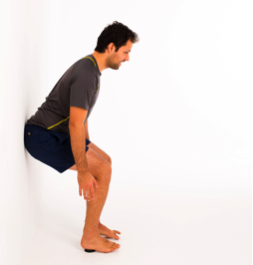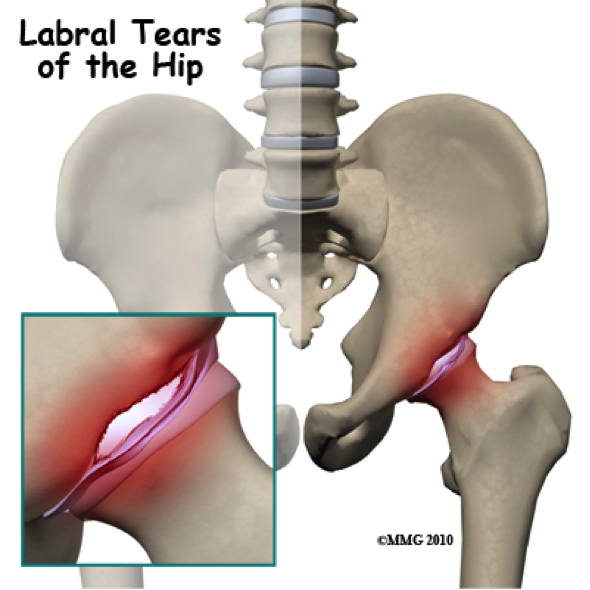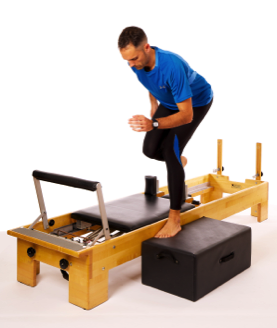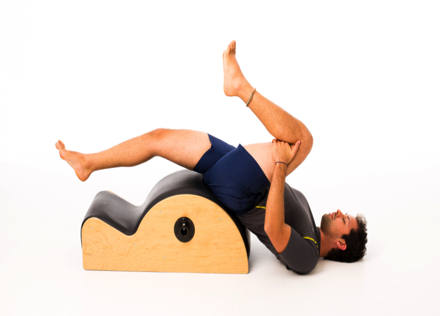Labral tears and hip pain
Fri,Feb 12, 2016 at 05:15PM by Carla Mullins
Labral tears and hip pain
Labral tears are a common cause of hip pain and associated dysfunction. When we walk, run and move our femurs (thigh bones) move in and around the hip as if there was a mortar in a pestle. The precision of the rhythm is essential in order to minimise injury and potential damage to the precious soft tissues that surround our hips.
Common hip problems can be pain in the groin area or down the side of the buttocks; clicking, locking and catching; a feeling of stiffness inside the hip. The leg may also feel unsteady to stand on and may have given way on occasion. Walking, in particular turning (pivoting) on the leg may be painful. These are all symptoms of something called labral tears.
Ideally we avoid labral tears through appropriate gait pattern and techniques. Unfortunately many people don’t appreciate the importance of this until they have injured themselves.
Let’s look at the hip socket and labral tears
The hip joint is comprised of a ball (the head of the femur) and a socket in the pelvis into which it should firmly sit (the acetabulum). This joint is further stabilised by a ring of cartilage called an acetabular labrum that circles the acetabulum to help keep the head of femur (ball) in place, acting as a seal. The labrum assists in sealing the joint to maintain fluid pressure within, and assist in stability.
Tears of the labrum can occur from traumatic incidents such as a car accident, overloading and repetitive movements that include a twisting movement (such as martial arts or with golfers), or because of being impinged and pinched from being held in a tight hip position (such as cyclists or dancers). A variety of congenital and other changes can also make someone more prone to getting a labral tear later in life.
Is surgery needed if there is a labral tear?
The outer portion of the labrum has good blood supply, therefore good levels of nutrition to help repair soft tissue damage. However, the inner portion closest to the inside of the hip does not. This means that some parts of the labrum can repair after injury, whereas others cannot, and may require surgical intervention. If a labral tear is suspected it is important to consult with a physiotherapist, as quickly as possible, in order to minimise further damage. The physiotherapist should consult directly with the doctor and specialist (where required) to determine if the labral tear can be managed conservatively (i.e. without surgery).
Poor gait and alignment can contribute to pain and place the labrum under more stress. Accordingly, with nonsurgical management it is important that there be:
// Assistance in improving walking gait
// Hip and lower leg strength and alignment exercises
// Exercises to strengthen supporting muscles in the leg and hip and any laxity or tightness within the joints
// Education on which activities to cease or modify during recovery
// Progressive exercises and stretches to aid in recovery
Remember if surgery is necessary then it is important that there still be a strengthening program for supporting muscles to help in the recover process. It is also important to incorporate upper body work into the exercise program, as post surgery you may be on crutches.
Below are some exercises that may possibly aid in hip pain that is from a labral tear. As every person (and tear) is different, you should seek advice and diagnosis from a physiotherapist prior to attempting these exercises. A well trained pilates teacher can also help with an appropriate exercise program only once they have been given a correct diagnosis of the problem.
What sort of focus should be in an exercise program for labral tears?
It has to be remembered that poor pivoting and movement patterning in the leg can contribute to a labral tear. As a result, any exercise program will need to focus on proper technique of movement of the femur head in the acetabulum, as the femur head can move around the hip joint a bit like a mortar in a pestle.
Some muscles can limit the movement of the femoral head in a smooth glide. These include (but are not exclusive to) the psoas, the glutes and the piriformis muscles. When working with hip alignment the important balancing of these muscles can assist in an improvement of poor gait. It is also important to remember that when it comes to correct gait there needs to be a focus on:
// Proper toe extension
// Quality activation of the intrinsic muscles of the feet
// Good quality dorsi flexion of the ankle
// Good knee flexion
// Good hip extension
// Good hip disassociation
// Good hip abduction
// Correct sacral nutation and sternal placement.
In other words, correct gait pattern requires a bit of work and practice.
Exercises to assist with labral tears

With this exercise you should place a makarlu under the pelvis, just at that point between piriformis and the greater trochanter. and do femur drops and slides. This can help release the glut and activate the adductors. You can adjust the resistance of the makarlu, to a person’s tolerance by taking out the inner domes if the pressure is too great.
Scooter can be a great way to strengthen the hip abductors on the supporting leg and the hip extensors and hip disassociation on the swing leg. It is important to remember that when a person is given scooter that the leg be placed at an angle that allows optimal hip extension. In other words, the knee should not be at less than 90 degrees. If the person is too short to achieve the correct knee and hip angle, then raise them up next to the reformer. Remember some people will need a stick in order to help them balance.
The psoas muscle attaches to the lesser trochanter of the femur (that is the inside of the leg) and part of its role is to help draw the femur into the hip socket. Needless to say, when there is a labral tear you need to encourage the femur to draw out of the hip socket. The psoas release can be done on a barrel or with some towels or a bolster under the hip.

Squat against wall with small dome of Makarlu under feet
Carla Mullins is co-director and co-owner of Body Organics, a multidisciplinary health and body movement practice with 3 studios in Brisbane. Carla is a Level 4 Professional Practitioner with the APMA and has also studied pilates with PITC as well as Polestar. She also has a LLB (QUT), M. Soc Sc & Policy (UNSW), Diploma Pilates Professional Practice (PITC), Gyrotonic Level 1, CoreAlign Level 1, 2 and 3 and Certificate IV in Training and Assessment.
 0
0 


